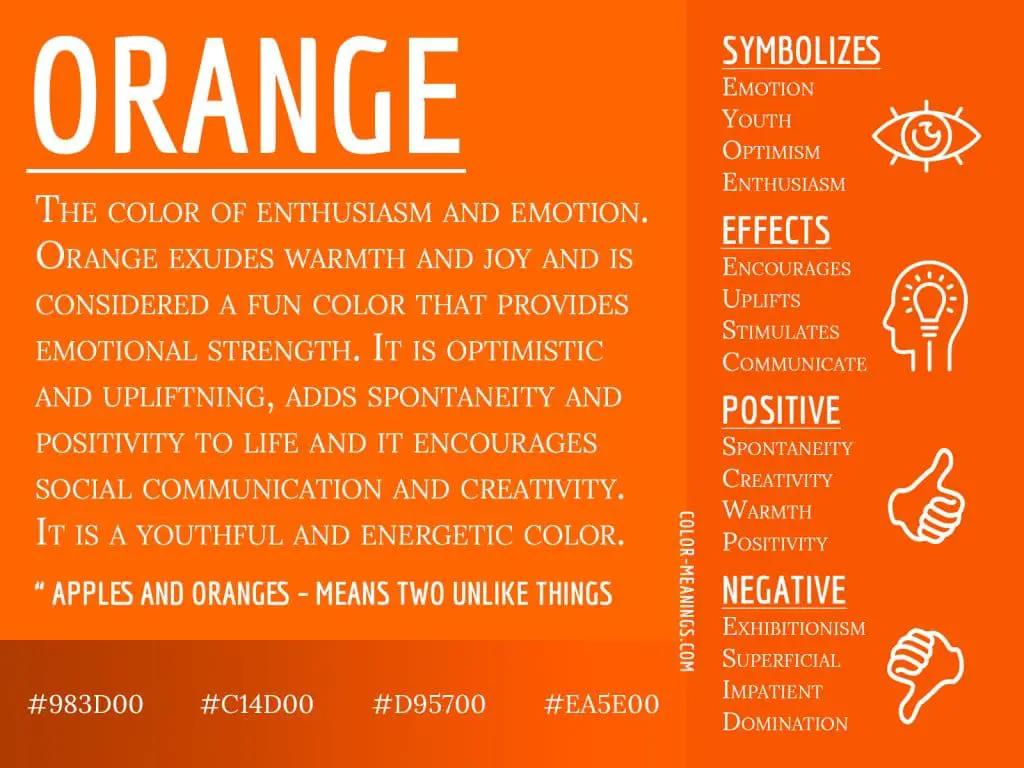The color burnt orange has a rich history and symbolism. In this article, we will explore the origins and meanings associated with burnt orange. From its use in nature to cultural associations, burnt orange evokes both autumnal warmth and fiery energy depending on the context. Read on to learn more about this dynamic shade!
The Origins of Burnt Orange
Burnt orange is a dark orange color that has a brownish tint to it, resembling the color of flames or autumn leaves. The first recorded use of “burnt orange” as a color name in English was in 1915. However, oranges and reddish-brown shades have long been associated with fire, heat, and the changing of the seasons.
The color likely derives its name from the process of literally burning oranges or other citrus fruits. When citrus peels are burnt, either as fuel or for other purposes, they take on a charred, dark orange appearance from the caramelization of their sugars. This gives a similar effect to the look of fallen leaves in autumn turning brown, orange, and red. The visual imagery connects the color to cyclical change and nature’s transformation.
Cultural Meanings of Burnt Orange
In many cultures around the world, burnt orange has taken on symbolic resonance:
Autumn
The most ubiquitous association is with the fall season. Just like pumpkin spice, turning leaves, and harvest time, burnt orange instantly evokes the sights and feelings of autumn. Marketers and designers frequently use the color in combination with brown, yellow, and red to create a nostalgic fall palette.
Fire
True to its name, burnt orange also suggests fire, warmth, and heat. It’s connected to fireplaces, candles, bonfires, and hearths. In Hindu culture, burnt orange is auspicious as it’s the color of holy flames.
Sunsets & Sunrises
When paired with yellows and reds, burnt orange can create vivid sunsets and sunrises. It captures the magical lighting that occurs at twilight hours.
Southwestern & Native American Culture
In the southwestern United States and in Native American art, burnt orange holds special significance. Sandstone canyons, clay pots, and textiles frequently feature the earthy color.
Buddhism
In Buddhist traditions, burnt orange is associated with wisdom, discipline, and the transformation of consciousness. Monks’ robes are often dyed or saffron, a similar tone.
Halloween
During the Halloween season, burnt orange evokes an autumnal spookiness when combined with blacks and purples. Jack-o-lanterns, leaves, and harvest decor showcase the festive shade.
The Psychology of Burnt Orange
What does burnt orange say about someone’s personality or emotions? Here are some of the psychological meanings behind the color:
| Psychological Meaning | Description |
|---|---|
| Warmth | Burnt orange conveys warmth, comfort, and security. It creates cozy feelings, like being near a fireplace. |
| Friendliness | Despite its association with fire, burnt orange feels gentle and inviting. It’s a friendly, welcoming color. |
| Nostalgia | Burnt orange triggers nostalgia and sentimentality for the past. It’s steeped in tradition and nostalgic imagery. |
| Creativity | With its energizing reddish tones, burnt orange sparks creative thinking and passion. |
| Spirituality | The color has deep spiritual resonance in many cultures, evoking transformation. |
So in essence, burnt orange contains a balance of warmth and energy. It soothes but also sparks imagination.
Uses of Burnt Orange
Given its many meanings, burnt orange finds use across a range of industries:
Fashion
In fashion, burnt orange is a staple fall color for dresses, sweaters, scarves, and accessories. It complements autumnal wardrobes. Certain shades match different skin tones.
Interior Design
In interior decor, burnt orange makes spaces cozy and inviting. It brings visual warmth and natural flair. Burnt orange works well with wood tones, greens, neutrals, and other fall colors.
Food
The food industry relies on burnt orange shades to convey flavors like pumpkin, sweet potato, maple, spice, smoke, and warmth. It’s universally connected to autumnal foods and beverages.
Cosmetics
In makeup, burnt orange offers a lively pop of color for eyeshadow, lipstick, blush, and nail polish. It pairs well with browns, coppers, neutrals, and peach tones.
Marketing
Burnt orange grabs attention in logos, branding, and packaging. It evokes autumnal cues that appeal to nostalgia and warmth.
Sports
From the Browns to the Orioles to the University of Texas, burnt orange features prominently as a team color. Fans connect it to their spirited pride.
Automotive
Certain car manufacturers like Toyota use burnt orange as an energetic accent color for vehicle interiors and exteriors.
Conclusion
In the end, burnt orange beautifully captures the vividness of autumn, fire, and southwestern landscapes. Both energetic and comforting, burnt orange promotes creativity and nostalgia. It symbolizes the changing seasons and cycles of nature.
Next time you see burnt orange, let the color rekindle your passion and stoke your inner flames. But also allow it to warm your spirit like a cozy autumn evening. Burnt orange is one of those versatile colors that can both invigorate and soothe. So embrace the burnt orange tones around you and see where they ignite your imagination!


